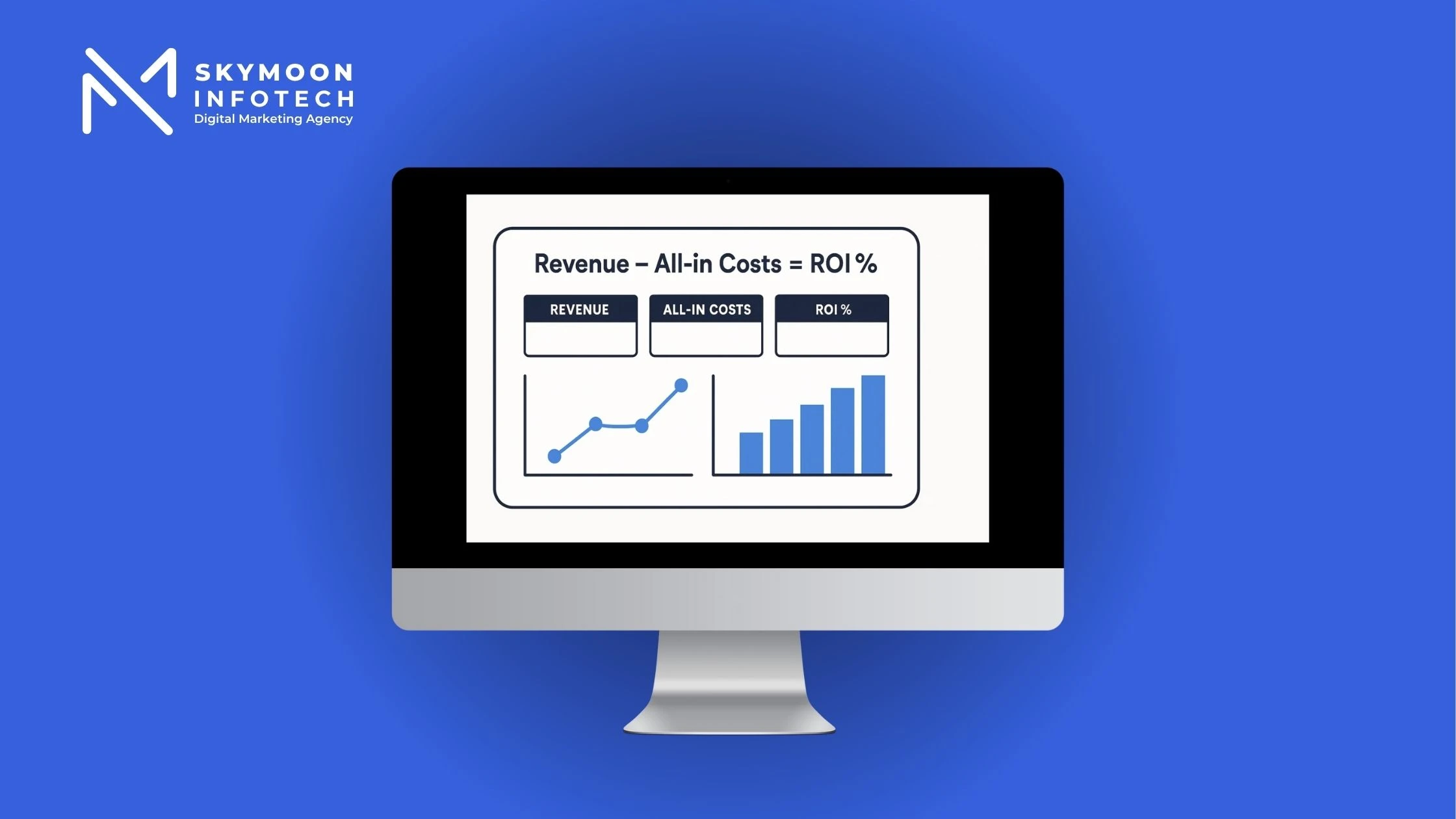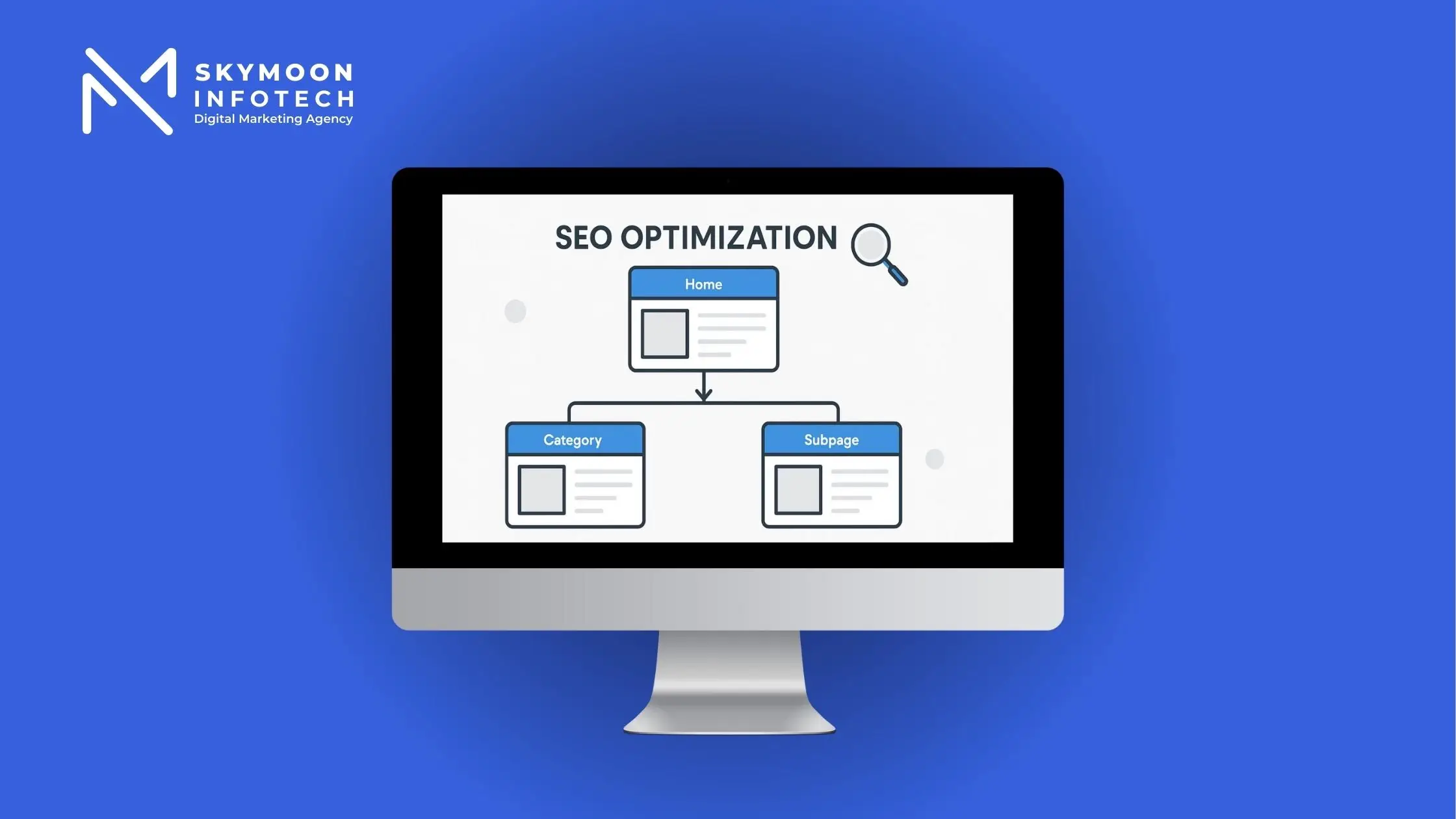SEO product descriptions are the engine of high‑intent traffic and on‑page conversions. If you’ve wondered how to write SEO friendly product descriptions that rank and convince, this guide lays out the process step by step. We’ll combine keyword research, content structuring, and conversion psychology into practical product description writing tips you can roll out across every SKU—without bloating copy or diluting your brand voice.
Why SEO Product Descriptions Matter for eCommerce Growth
A great description does three jobs at once: it clarifies value for shoppers, signals relevance to search engines, and nudges action. When you optimize product page for SEO, your copy becomes a ranking signal. When you focus on buyer concerns—fit, material, compatibility, shipping—it becomes a sales assistant that reduces friction.
According to Shopify’s product description guide, the best listings blend benefits with search intent. For example, instead of “Black leather handbag,” write “Black full‑grain leather handbag with gold hardware and adjustable strap—built for everyday carry.” That line answers style and use‑case while targeting long tail product description SEO queries such as “leather handbag with gold hardware.”
Clean, convincing copy also lifts conversions. If you’re working to close the loop from traffic to sales, our conversion rate optimization services show that descriptions that prevent objections (sizing, care, warranty) keep visitors on‑page longer and clicking “Add to Cart.” That’s the MoFu goal: match intent, then move the purchase forward with clarity.
Core Principles for Writing SEO‑Friendly Product Descriptions
Start with buyer‑led keyword research
Begin with customer language, then map it to data. Use Google Keyword Planner and the Ahrefs keyword research guide to find primary, secondary, and long tail product description SEO terms. Group by intent: informational (materials, sizing) and commercial (buy, price, best, free shipping). Favor phrases that mirror how shoppers describe problems or outcomes.
Practical rule: if a long‑tail phrasing answers a specific buying scenario—“hypoallergenic bamboo crib sheets”—it’s worth using as it is once, then supporting with similar variants.
Use the best format for product descriptions
Structure drives readability and rankings. A proven outline:
- Title with the core phrase up front.
- Hook sentence that states the primary benefit.
- Bulleted features for fast scanning.
- Benefit paragraph that translates features into outcomes.
- Micro‑FAQ for top objections (fit, care, compatibility).
- Soft CTA (“Add to cart”, “See size guide”).
If you need consistency across catalogs, our SEO‑friendly content writing team can build a reusable product description template SEO friendly so every new SKU ships with the same quality bar.
Turn features into benefits
Specs inform; benefits sell. Don’t stop at “IPX7 waterproof.” Add the why: “IPX7 waterproof—so your earbuds keep playing through sweat and sudden rain.” Short, specific, customer‑outcome language wins.
Write for skim + search
Use short sentences, front‑loaded keywords, and descriptive subheads. Avoid walls of text. Let bullets carry specs; keep paragraphs to 2–4 sentences. This is good UX and aligns with seo for ecommerce product pages best practices.
Maintain brand voice without fluff
Sound like your brand—crisp for performance gear, warm for artisanal goods, clinical for medical devices. Voice consistency reduces bounce and increases trust, especially on category pages with many similar products.
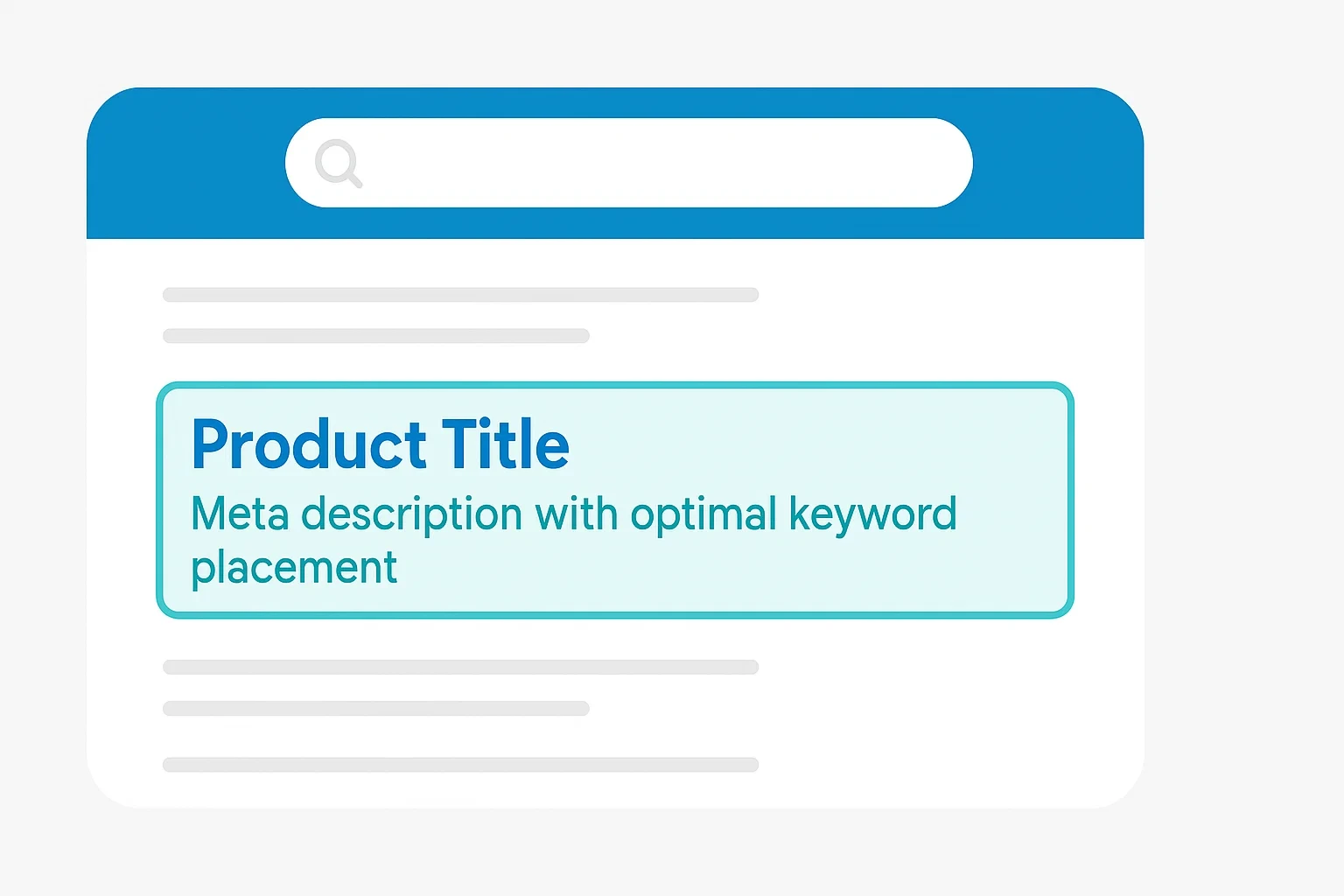
Optimize Product Titles & Meta Descriptions
Titles and snippets are your billboard in SERPs. They must communicate relevance, differentiate the product, and earn the click.
Optimize product title meta the right way
Keep titles under ~60 characters. Lead with the head term, then add 1–2 distinctive traits. Example: “Running Shoes — Lightweight Mesh, Wide Toe Box.” You’ve covered the category and two differentiators while satisfying optimize product title meta guidance.
Craft meta descriptions that convert
Aim for 150–160 characters. Start with a benefit and a keyword; finish with a soft CTA. As Moz’s title & meta guidance notes, clarity beats cleverness: “Handmade leather wallet with RFID blocking. Slim, durable, ships free. Choose your color.” One tight sentence, keyword present, clear value.
Add structured data and micro‑FAQ
Enhance snippets with Product schema (price, availability, rating). Include a compact Q&A in the description (e.g., “Will it fit iPhone 15?”) to catch long‑tail queries and relieve purchase anxiety.
Workflow: From Idea to Final Copy (with AI Support)
AI can accelerate scale, but it needs human guardrails.
Where AI helps
Use AI to generate first drafts, variations for A/B tests, and tone adjustments. For catalogs with thousands of SKUs, ai generated product descriptions seo can maintain structure and speed without sacrificing consistency.
Guardrails that protect SEO and brand
- Accuracy first. Fact‑check dimensions, materials, compatibility.
- No stuffing. Keep keywords natural; one exact match + similar variants is plenty.
- De‑duplicate. Vary intros and benefits so near‑identical products don’t collapse in search.
- Voice check. Read aloud for rhythm and tone.
Google’s stance is outcome‑based; quality and usefulness win. See Google Search Central on AI content for guidance.
Human finishing pass
Layer in the micro‑FAQ, internal links, and category‑level proof (warranty, testing standards, brand story). This is where conversion climbs. If you need scale plus polish, our SEO services for eCommerce cover content, schema, and on‑page QA.
Product Description Templates (Copy‑Paste & Adapt)
Below is a modular template you can adapt per SKU. It respects the best format for product descriptions and keeps copy scannable.
Title: {Primary keyword + key trait}
Hook: One‑sentence outcome
Bullets:
- Material/Build → customer benefit
- Dimension/Capacity → use‑case clarity
- Compatibility/Use → avoid returns
- Care/Warranty → reduce risk
- Benefit Paragraph (3–4 lines): Tie features to daily use and results.
- Micro‑FAQ (2–3 Qs): Fit/compatibility/shipping.
- CTA: “Add to Cart” + size/guide link.
This template keeps every listing uniform—exactly what a product description template SEO friendly is meant to do.
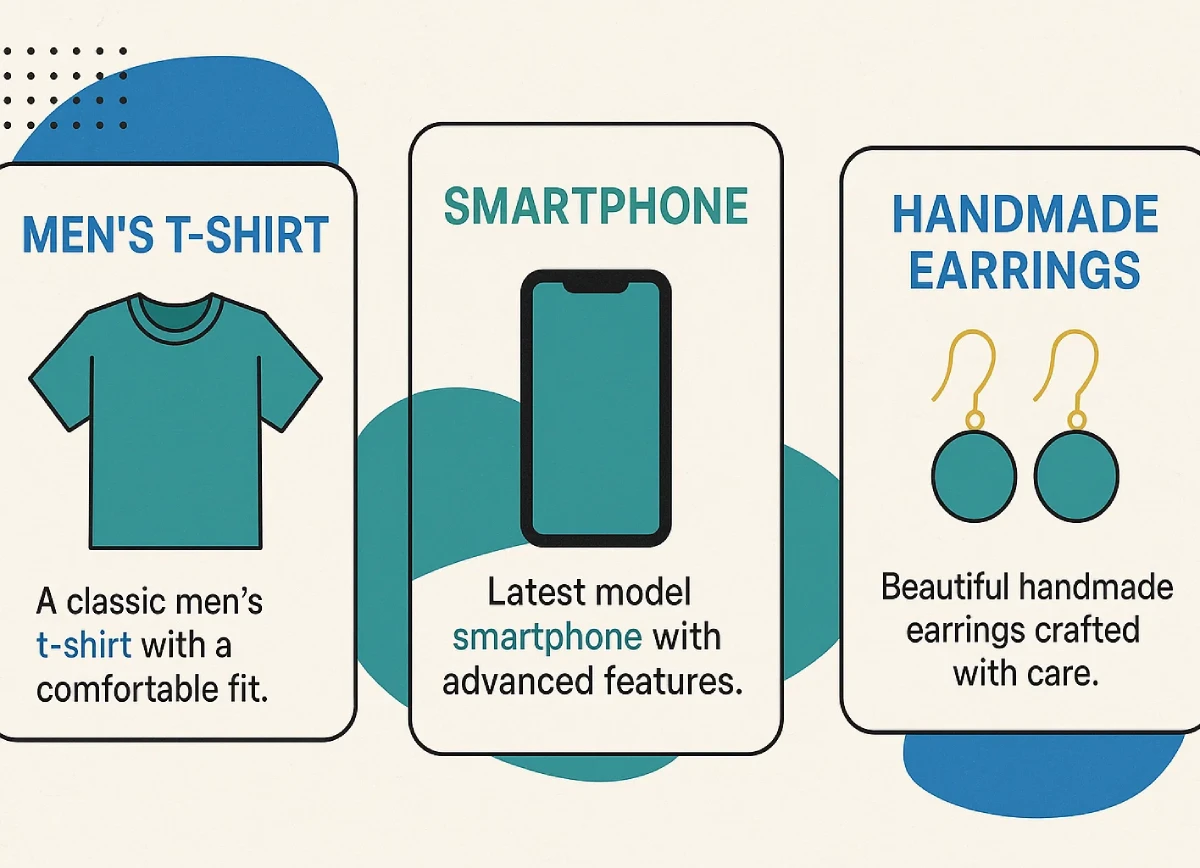
eCommerce Product Description Examples (SEO + Temptation)
Studying real patterns helps. These ecommerce product description examples SEO show how to weave specifics with search intent.
Example 1: Performance Running Socks
Title: “Merino Running Socks — Cushioned Heel, Blister‑Guard”
Hook: Run farther with temperature‑regulating merino that stays dry mile after mile.
Bullets:
- Merino‑nylon blend wicks sweat to prevent blisters.
- Targeted arch support reduces foot fatigue on long runs.
- Reinforced toe/heel for durability.
- Benefit Paragraph: These socks balance cushion with breathability so your feet don’t overheat. They’re ideal for marathon training, treadmill sessions, and wet weather.
- Micro‑FAQ: “Will they fit wide feet?” “Do they shrink?” This copy targets “merino running socks,” while long‑tails like “blister‑guard running socks” appear naturally.
Example 2: Handcrafted Chef’s Knife (8″)
Title: “8‑Inch Chef’s Knife — Full‑Tang, Hand‑Honed”
Hook: Slice with less effort thanks to a razor‑sharp edge and perfect balance.
Bullets:
- High‑carbon steel holds an edge longer.
- Full‑tang construction for stability.
- Ergonomic G10 handle for secure grip.
- Benefit Paragraph: You’ll prep faster with clean, controlled cuts—great for thick vegetables and delicate herbs.
- Micro‑FAQ: “Dishwasher safe?” “Sharpening schedule?” Keywords align to “chef’s knife 8 inch full tang,” a classic long‑tail.
Example 3: Organic Cotton Baby Sleepsack
Title: “Organic Cotton Sleepsack — Breathable, Hip‑Healthy”
Hook: Keep baby cozy without overheating.
Bullets:
- GOTS‑certified cotton for sensitive skin.
- Two‑way zipper for easy nighttime changes.
- Roomy hips recommended by pediatric PTs.
- Benefit Paragraph: Parents get peace of mind; babies sleep better.
- Micro‑FAQ: “Tog rating?” “Washing care?” Natural inclusions hit “organic cotton sleepsack breathable” while keeping voice reassuring.
For more patterns and checklists, see BigCommerce’s examples and guidance.
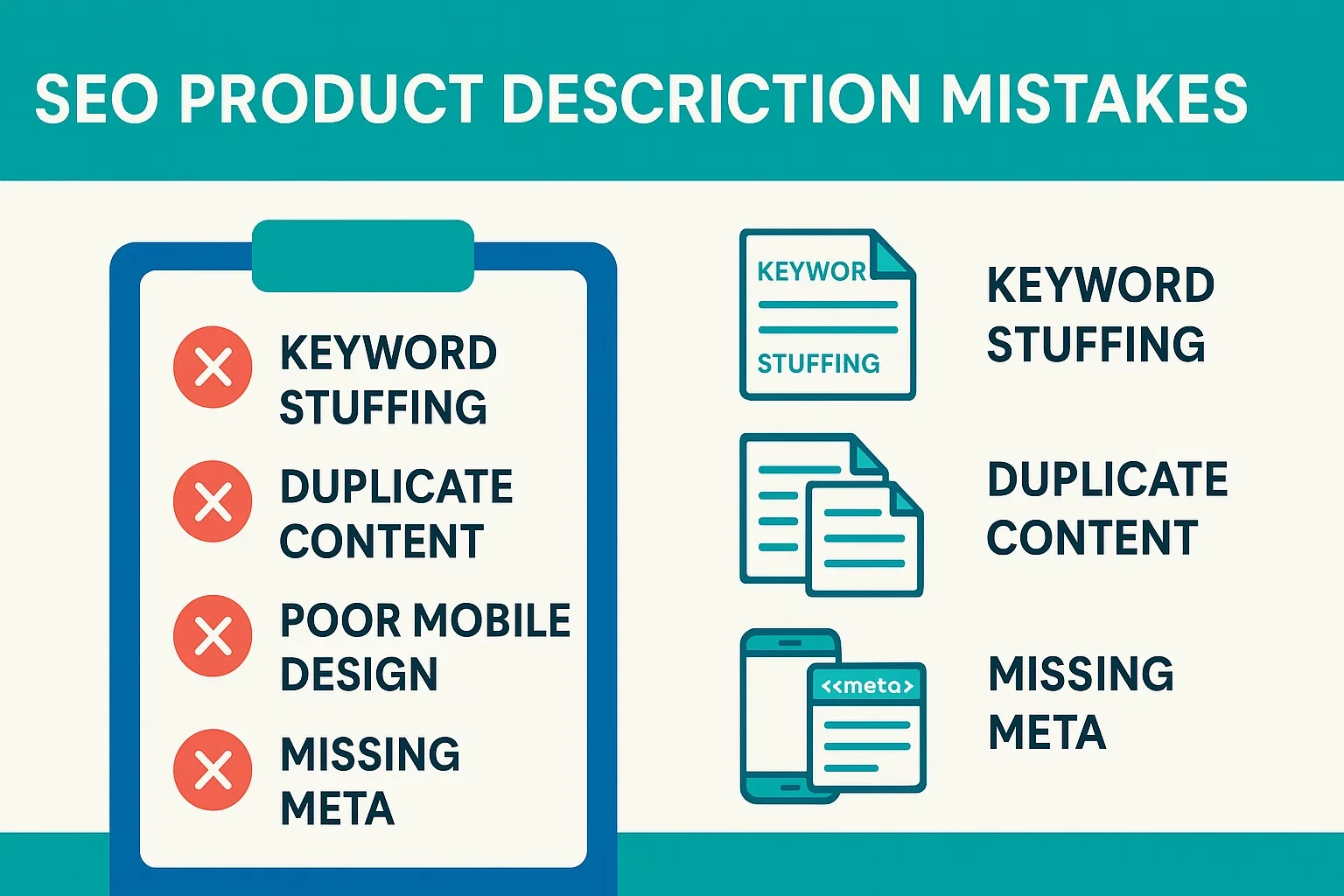
Implementation Checklist (Copy This into Your SOP)
Use this checklist to optimize product page for SEO without bloat:
- Map primary + secondary + long‑tail terms to intent.
- Write the title with the head term up front; keep it under 60 chars.
- Open the description with a benefit‑led hook using one exact‑match keyword.
- Bullet 4–6 key features for fast scanning.
- Translate each feature into a benefit (comfort, speed, convenience, savings).
- Add a 3–4 line benefit paragraph that frames daily use.
- Drop a micro‑FAQ for fit/compatibility/care/shipping.
- Include a clear CTA and size/fit or compatibility guide link.
- Add internal links to guides or services that deepen trust and navigation.
- Implement Product schema; include price, availability, rating.
- QA mobile readability; verify sentences average under 20 words.
- Publish and A/B test hooks, bullets, and CTAs; iterate monthly.
Common Mistakes to Avoid
- Keyword stuffing. It hurts readability and rankings. Keep density natural; vary phrasing.
- Copying manufacturer text. Causes duplication; write unique value‑led copy.
- Ignoring mobile. Long paragraphs on small screens kill engagement.
- Skipping meta optimization. Titles/snippets win the click—don’t leave them generic.
- No schema or social proof. You miss richer snippets and trust signals.
As Neil Patel’s SEO mistakes overview notes, these basics remain the most frequent roadblocks.
Putting It All Together
Creating seo product descriptions that rank and sell is a repeatable process. Use a template for structure, tailor benefits to real buyer concerns, and test phrasing over time. Blend these steps with ongoing ecommerce seo tips—technical health, internal linking, and schema—and your catalog pages will steadily climb while conversions follow. If you want help scaling the system, explore our SEO services or contact us for an implementation plan.
FAQ
What’s the best format for product descriptions?
Title with the head term up front, a one‑sentence hook, scannable bullets, a short benefit paragraph, micro‑FAQ, and a soft CTA.
How many keywords should I include?
One exact‑match phrase plus a few similar variants is enough. Let long‑tails appear naturally in bullets and micro‑FAQ.
Can I rely on ai generated product descriptions seo?
Use AI for drafts and variations, then human‑edit for accuracy, tone, and de‑duplication. Follow Google’s guidance.
Where do internal links belong?
Embed within context—e.g., link to guides or services when you mention optimization or conversion, not as a separate “Links” line.
What about category pages?
Summarize value, link to best‑sellers, and add a short intro that supports seo for ecommerce product pages without cannibalizing product keywords.





